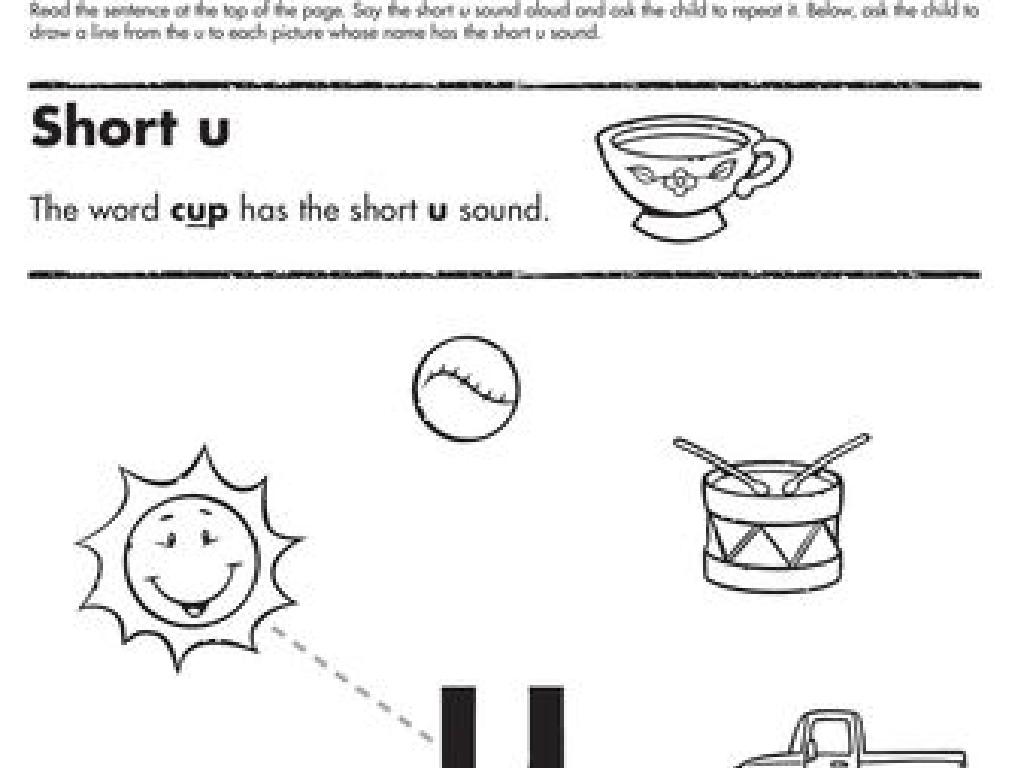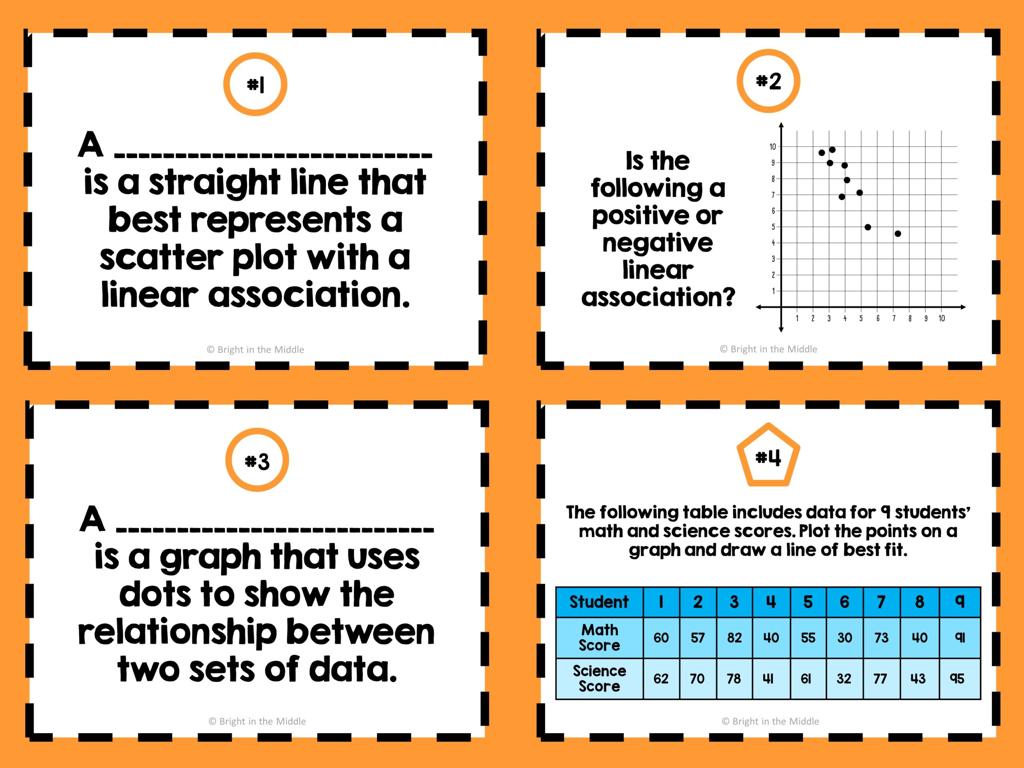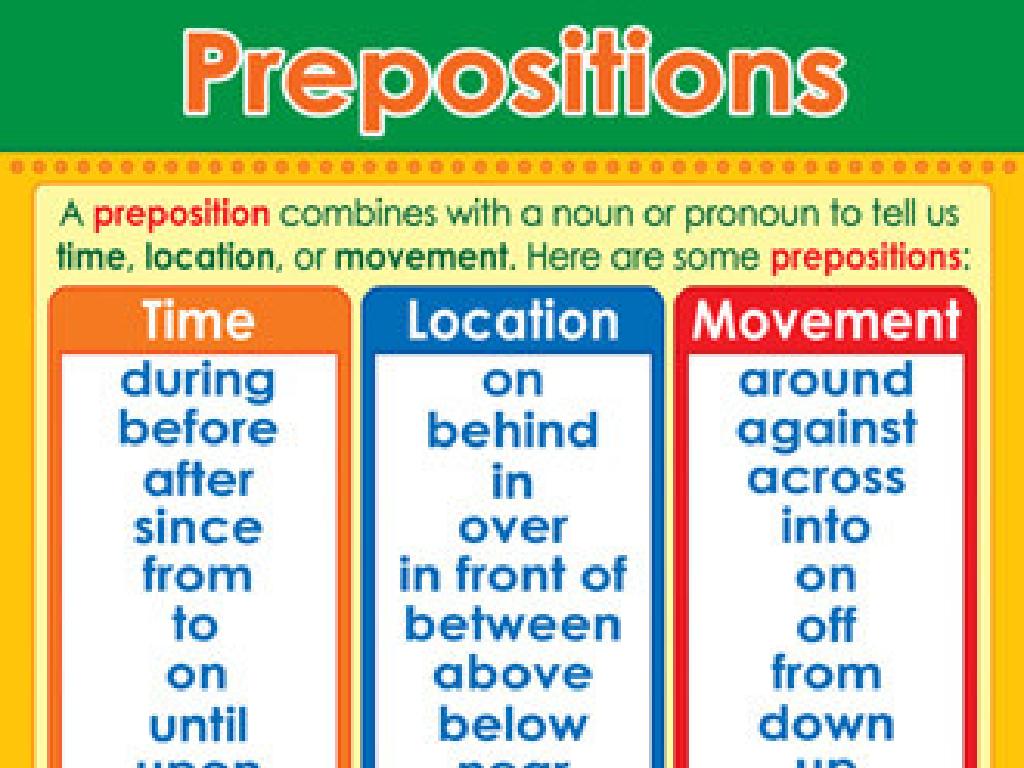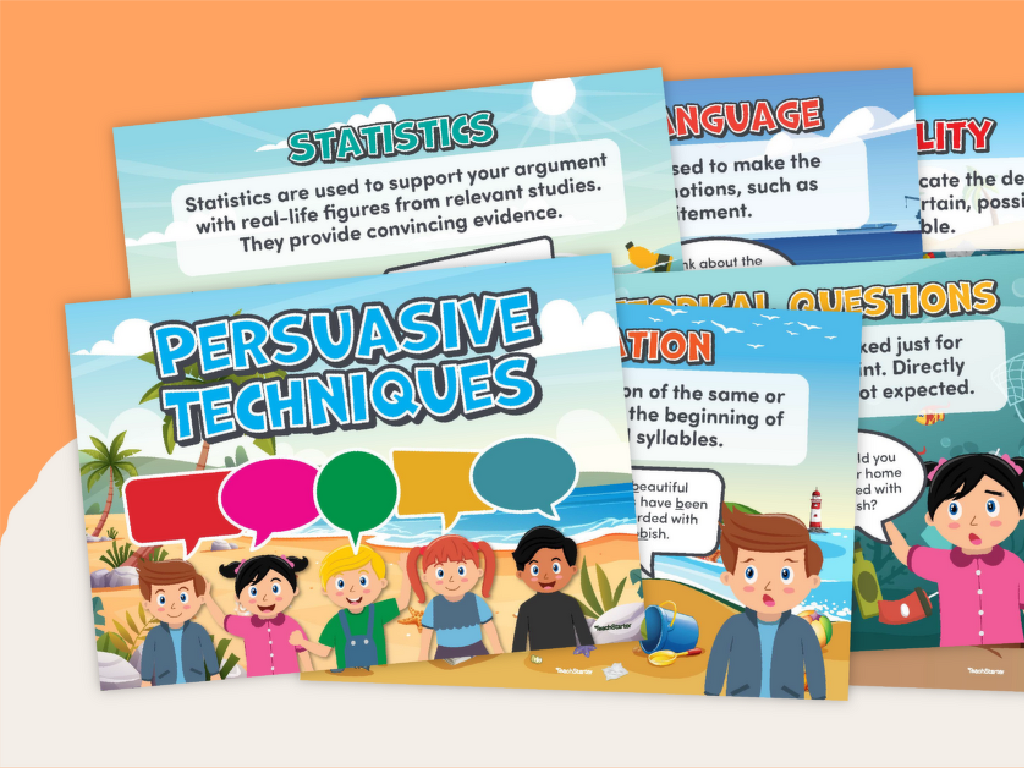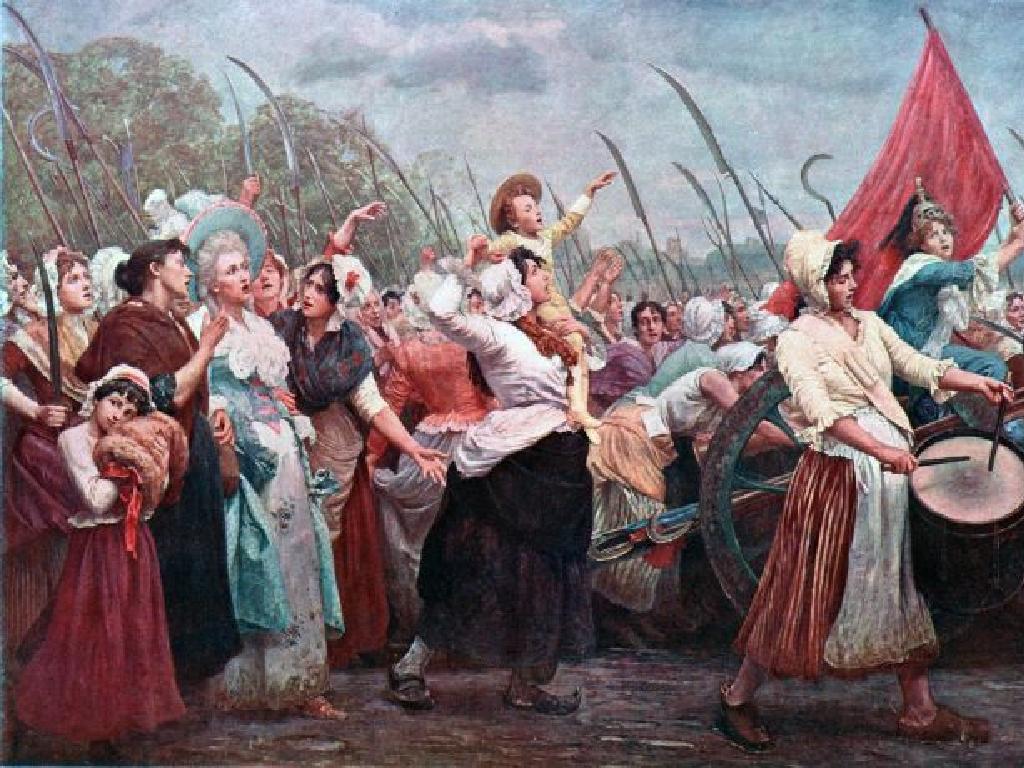Identify Parallelograms
Subject: Math
Grade: Third grade
Topic: Quadrilaterals
Please LOG IN to download the presentation. Access is available to registered users only.
View More Content
Today’s Adventure: Identifying Parallelograms!
– What is a Quadrilateral?
– A shape with 4 sides and 4 angles.
– Parallelograms in the family
– Parallelograms are a special member with opposite sides parallel.
– Features of a parallelogram
– Opposite sides are equal and parallel; opposite angles are equal.
– Finding parallelograms around us
|
Begin the lesson by defining a quadrilateral to the students, ensuring they understand it as a four-sided shape. Then, introduce the concept of parallelograms, explaining that they are a special type of quadrilateral with opposite sides that are parallel. Highlight the key features of parallelograms, such as equal and parallel opposite sides and angles. Encourage students to look around their environment to find objects that resemble parallelograms, which will help them relate the concept to real life. Use diagrams to illustrate a parallelogram’s properties and provide examples of parallelograms for visual reference. The goal is to help students recognize parallelograms both in geometry and in their everyday surroundings.
Exploring Parallelograms
– Parallelograms have parallel sides
– Think of train tracks always running alongside each other
– Opposite sides are equal in length
– Just like your arms are the same length, so are the sides!
– Opposite angles are equal
– Angles across from each other are twins!
– Rectangles, rhombuses, squares are examples
– These shapes all have 4 sides and special rules
|
This slide introduces the concept of parallelograms to third-grade students. Emphasize that parallelograms are a type of quadrilateral with some special properties. The opposite sides are parallel, which means they run alongside each other at equal distances, like train tracks or the sides of a ladder. The opposite sides are also equal in length, similar to how a person’s arms are usually the same length. Additionally, the opposite angles are equal, which can be illustrated by showing how ‘twin’ angles look the same. Use common examples like rectangles, rhombuses, and squares to show that these familiar shapes are all types of parallelograms. Encourage students to look for these properties in shapes around them and bring examples to class.
Properties of Parallelograms
– Opposite sides are parallel
– Sides facing each other never meet
– Opposite sides are equal
– Each pair of facing sides is the same length
– Opposite angles are equal
– Corners across from each other have the same angle
– Consecutive angles add to 180°
– If you add up angles next to each other, they make a straight line
|
This slide introduces students to the key properties that define parallelograms. Emphasize that opposite sides being parallel means they run alongside each other at the same distance apart and never intersect. Highlight that not only are opposite sides parallel, but they are also of equal length, which is a unique feature of parallelograms. Discuss how opposite angles being equal helps in recognizing parallelograms, and use examples to show how consecutive angles (angles next to each other) always add up to 180 degrees, forming a straight line. Use a real-life cutout of a parallelogram to demonstrate how diagonals (lines connecting opposite corners) bisect each other, meaning they cut each other exactly in half. This hands-on demonstration will help solidify the concepts for the students.
Identifying Parallelograms
– Spotting parallelograms
– Look for opposite sides that are equal and parallel
– Unique properties of parallelograms
– Opposite sides equal, opposite angles equal, diagonals bisect each other
– Practice with examples
– We’ll look at shapes and decide if they are parallelograms
|
This slide is aimed at helping third-grade students recognize parallelograms among other quadrilaterals. Start by explaining that a quadrilateral is a four-sided shape. Then, teach them to identify parallelograms by looking for shapes with opposite sides that are both equal in length and parallel to each other. Highlight the unique properties of parallelograms, such as equal opposite sides and angles, and diagonals that bisect each other. Use visual examples to illustrate these properties. Finally, engage the students with practice examples where they apply what they’ve learned to identify parallelograms. Encourage them to explain why a shape is or isn’t a parallelogram based on its properties.
Parallelograms in Real Life
– Spotting parallelograms daily
– Parallelograms: Tiles, Books, Tables
– Look at floor tiles, book shapes, and table tops
– Practical uses of parallelograms
– They’re used in construction and design for stability and aesthetics
– Activity: Find a parallelogram
– Search your home or classroom for parallelogram shapes
|
This slide aims to help students recognize parallelograms in the world around them, enhancing their understanding of shapes in a practical context. Encourage students to observe their surroundings and identify objects that have the characteristics of parallelograms, such as opposite sides that are equal and parallel. Discuss how parallelograms are used in everyday objects for various purposes, including construction and design, due to their properties. For the activity, students should look for parallelogram shapes in their environment and be ready to explain how they identified them. This will help solidify their understanding of the shape’s properties and its relevance to real-life situations.
Class Activity: Parallelogram Hunt
– Become parallelogram detectives
– Find parallelogram-shaped objects
– Look around the classroom or playground
– Draw or list your findings
– Use paper to sketch or write down objects
– Share with the class
|
This activity is designed to help students recognize parallelograms in the world around them. Encourage the students to look for objects that have the characteristics of parallelograms, such as opposite sides that are equal and parallel. They can work individually or in small groups to find as many objects as possible within a set time frame. Provide drawing materials or a worksheet for them to record their findings. At the end of the activity, ask students to present their findings to the class, discussing how they identified each object as a parallelogram. This will reinforce their understanding of the shape’s properties and enhance their observational skills.
Parallelogram Experts!
– Congratulations on mastering parallelograms!
– Recall unique parallelogram properties
– Opposite sides are equal and parallel
– Spot parallelograms in your environment
– Look for shapes in buildings, art, and nature
– Keep practicing your new skills
|
This slide is a celebration of the students’ understanding of parallelograms. It’s important to reinforce the properties that define a parallelogram, such as opposite sides being parallel and equal in length, and opposite angles being equal. Encourage students to continue observing their surroundings to find parallelograms in real life, which will help solidify their learning. Remind them to keep practicing with different shapes to become even more confident in identifying parallelograms. You can suggest a fun activity like a ‘parallelogram hunt’ where they can take pictures or draw parallelograms they find at home or outside.

